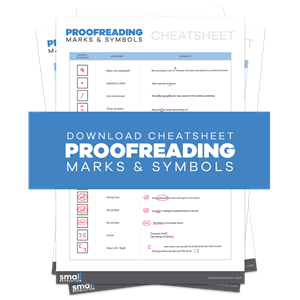Copywriting is pretty simple. All you need is a bit of creativity, a dash of humor and a sprinkle of language mastery, right?
Wrong. While these three attributes make you a good writer, to be a great copywriter with better chances of getting copywriting jobs and higher pay, you need to be part of the copywriting elite.
Trust me – it’s a very simple thing to do.
Just who are the elite and what sets them apart from any other writers out there?
Like any other exclusive group, there’s a lot of insider information they possess that puts them in a class of their own. To be an elite copywriter, consider the following:
Before Writing
1. Understand Your Audience and Their Needs
Great copywriters understand that it is difficult if not altogether impossible to write if you don’t have the person you’re writing for in mind. The intended audience determines the nature of your writing.
Before generating actual copy, seek to understand who will interact with your content and why they’re seeking it out.
By doing so, you ensure that you develop relevant content, which in turn means audiences will gain value from it.
Failure to incorporate this into your writing would result in you “talking at” the audience rather than communicating with them and worse, this would dissuade them from interacting with your content further.
Your job is not to write copy. Your job is to know your visitors, customers and prospects so well, you understand the situation they’re in right now, where they’d like to be, and exactly how your solution can and will get them to their ideal self.” – Joanna Wiebe
2. To Be an Insider, Start by Outlining
One of the most challenging things about being a writer is having all these ideas popping into your mind and having to shape them into captivating, meaningful written work.
To address this, insiders within the copywriting elite start every article by creating an outline.
Think of it as a recipe that helps you organize your thoughts, determine what is required and maintain order in your process so that the results will keep readers coming back for more.
- Start with a big idea. What is the main focus of your article? What key message do you want to put across?
- Follow this with a description of your target audience. For instance, if you’re writing on the merits of an online degree program, your target audience might be working students who would gain value from studying at the most convenient time for them.
- Next, write down the search intent of your reader as they would look it up online e.g., “how to get a degree while working full time” or “best online degrees for working students”.
Once you’ve established these three key areas of your outline, think of introductions that would interest your readers. Then narrow down your ideas to a reasonable number of points you’ll expand upon in the main body of your article.
When you outline before you start writing, you’ll notice that you save time and improve your efficiency.
You’ll have a clear direction you’re moving in and won’t have to keep starting over, trying to figure out what approach is best for a given piece of writing.
Over time, outlining will improve your thought process, as ideas are more likely to flow logically the more you practice, therefore enabling you to write with greater ease.
While Writing
3. Present Content Professionally
Professional content presentation entails ordering your work in a manner that is visually appealing to readers. You can achieve this through:
Hierarchical headlining
One major difference between professional and amateur copy is that the former consists of headlines that follow a hierarchy in their order of importance.
To help readers and search engines make better sense of your work, use the built-in capabilities of your publishing software to designate headlines.
If you’re using Google Docs, you can see the outline of your document, and if you’ve styled your headings accordingly, you’ll see them neatly lined up.
Example: To highlight the title of your article, navigate to the styles tab and from the drop-down menu, apply the “Title” style.
Font styling and formatting
As a rule of thumb, use a 12 point font type that’s easy on the eyes. Use a standard font throughout as this enhances the reading experience by improving readability.
It’s best to align your text to the left as opposed to having it centered, right-aligned or justified.
Bullets and numbers
Unless you’re channeling an inner Tolkien, your text should be written as it will be consumed – in easy to read blocks rather than long tortuous paragraphs.
You can do this by utilizing bullets and numbers where possible.
For instance, create a numbered list instead of cramming several related points into a paragraph:
Don’t
Must-see tourist attractions in South Africa include Table Mountain, Cullinan Diamond Mine, Johannesburg Tower, and the Stellenbosch wine estates.
Do
Must-see tourist attractions in South Africa include:
- Table Mountain
- Cullinan Diamond Mine
- Johannesburg Tower
- Kruger National Park
- The Stellenbosch Wine Estates
It may seem trivial but the use of bullets and numbers significantly impacts how your reader perceives your writing.
For your reader, yet another paragraph can seem tedious; it makes it harder to skim through and pick out important details and is likely to reduce their already short attention span.
4. Appeal to Readers’ Emotions
To join the greats, your writing should appeal emotionally to your audience.
A great way to actualize this principle is to write in a conversational tone. Imagine you’re crafting a message to someone close to you.
Moving your readers’ emotions makes it easier to get them to take actions you’ve suggested such as subscribing to your blog or making a purchase.
As you’ve already established a connection, you come off as a friend making recommendations rather than a coercive stranger.
In essence, your writing will sound more like an engaging conversation and less like a scholarly article.
Conversational writing will not only benefit your readers, but it will make your process easier as well. It will simplify your editing as there are fewer rules to follow and your article will be more enjoyable to write.
“Copy is a direct conversation with the consumer.” – Shirley Polykoff
5. Do Offer Solutions, Don’t Dwell on Problems
Chances are if a person took time to seek out help from your writing, they have enough problems and are now after solutions instead of finding more to worry about.
Solution-based content is more likely to result in users spending more time on it. This translates to better ranking on search engines as it gives readers what they want.
By offering solutions, you’ll be better placed to draw return visitors as they will have developed confidence in your capacity to help them out.
6. Be Both Readable and Scannable
As a copywriter, it’s easy to fall into the temptation of dropping keyword bombs everywhere in an article, with the aim of improving your SERP. After all, this has been a major way of drawing visitors to your site.
In today’s copywriting landscape, however, this does more harm than good. You’re writing for readers and search engines like Google. Both favor copy that emphasizes value.
Give your readers information that is unique, meaning it doesn’t pop up on many other sites. And use your distinct writing voice, to make your work more original and appealing.
After Writing
Now that you’ve done all that work, how about some tools to optimize your process?
7. Use Proofreading Tools and Techniques
At every stage of writing, allocate some time to going over your work. It’s likely that each time you do, something that needs your attention will pop up.
Ask someone else to go through your work as well. This allows for a fresh perspective to point out the errors you missed or offer much-needed feedback.
Beyond that, every elite copywriter knows the value of tools that will help bring out the best in them:
- Grammarly checks for grammatical issues, contextual errors, and misused punctuation marks, improves readability based on the intent of your writing and recommends better word choice.
- Capitalize My Title offers hassle-free formatting for your titles.
- Hemingway Editor keeps your writing succinct.
8. Keep Learning
Lastly, get to know as much as you can from the experts themselves!
You can start immediately by taking a comprehensive course that touches on everything elite copywriters.
Photo by Freepik


